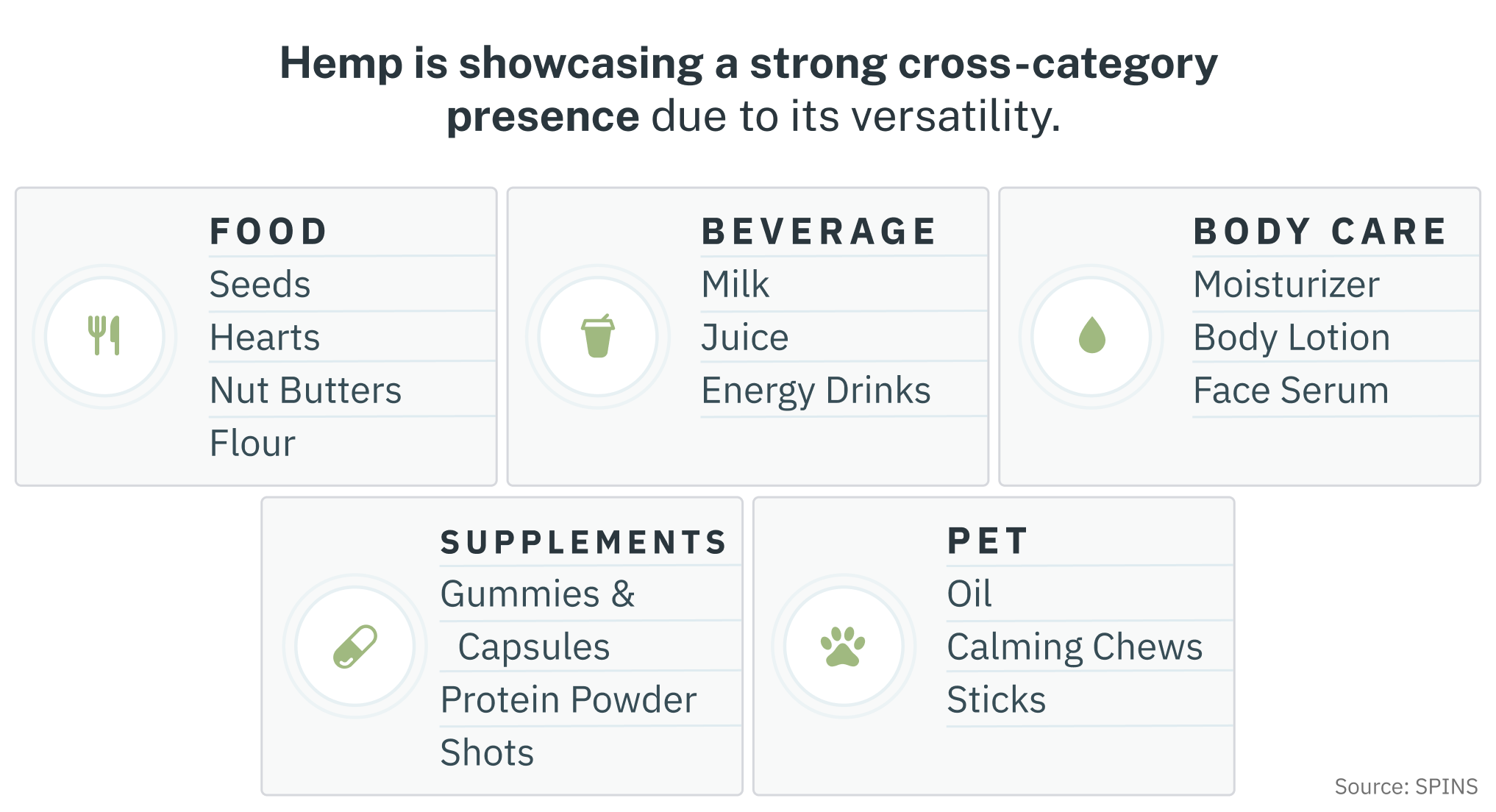Hemp offers many uses and benefits
Hemp has made its way from specialty retailers into mainstream outlets as a common ingredient in the food, beverage, VMS, and body care aisles. Yet, many shoppers are still not sure what hemp is (and what it isn’t). That is in part because hemp only became legal in the United States as part of the 2018 Farm Bill, making it a relatively new product with a lot of mystery and confusion for shoppers.
“The regulatory environment around hemp has made it one of the most misunderstood superfoods,” says Jared Simon, president of Manitoba Harvest. “It’s an incredibly rich source of nutrition, but remains a well-kept secret that even retailers struggle to understand.”
Related: Surprising Trends in Body Care
The Nutritional Benefits of Hemp
To answer one of the most commonly asked questions: No, hemp is not marijuana. Hemp is a cannabis plant, but it does not contain more than 0.3 percent of THC (also known as the compound that can give someone a high). Eating hemp seeds or products with hemp will not give someone a high and eating a normal amount of seeds or oil will not result in a positive drug test. It is often labeled a superfood due to its nutritional properties.
While hemp is new to modern stores, its use has a long history. As one study points out, “[P]roperties of hemp have been used to aid in treating and preventing ailments for thousands of years…” Hemp seeds, for example, are a nutrient-dense food that gets approximately 25% of its calories from protein, which is double the amount found in flax and chia seeds. The seeds are also rich in omega-6 and omega-3 fatty acids, which are known to address heart health and tackle inflammation, among other benefits.
Hemp’s Many Uses
A main component of hemp’s increasing popularity and strong cross-category performance is how versatile it is. Hemp is an ingredient in products that span store aisles, allowing shoppers to enjoy its health benefits in a variety of ways that fit their lifestyle and goals. Shoppers can find hemp in many forms and as functional ingredients within a variety of products:
- Food: Seeds, hearts, nut butters, flour
- Beverage: Milk, juice, energy drinks
- Body care: Moisturizer, body lotion, face serum
- Supplements: Gummies and capsules, protein powder, shots
- Pet: Oil, calming chews, sticks

That versatility to be part of any meal occasion, be it savory or sweet, is why hemp is a go-to ingredient for homemade meals, from entrees to desserts and snacks. This wide spectrum of hemp products is resonating with shoppers, as sales show. According to SPINS data, hemp sales are growing in several categories over a 52-weeks period:
- Creams and creamers 228.8%
- Deodorants and antiperspirants 121.8%
- Shelf stable candy 74.9%
- Shelf stable cookies and snack bars 56.3%
- Refrigerated juices 49.9%
- Baby and toddler food 44.5%

Expect to see hemp pop up in more products throughout the store as more brands innovate new products and curious shoppers discover its many health benefits. Plus, functional ingredients, like hemp, are making their way into everything from coffee to candies, so shoppers will be seeking out products that offer a maximum amount of nutritional benefits.
*Based on SPINS Total US Natural Enhanced Channel + Conventional Multi-Outlet powered by iRi for the 52 weeks ending October 30, 2022.





